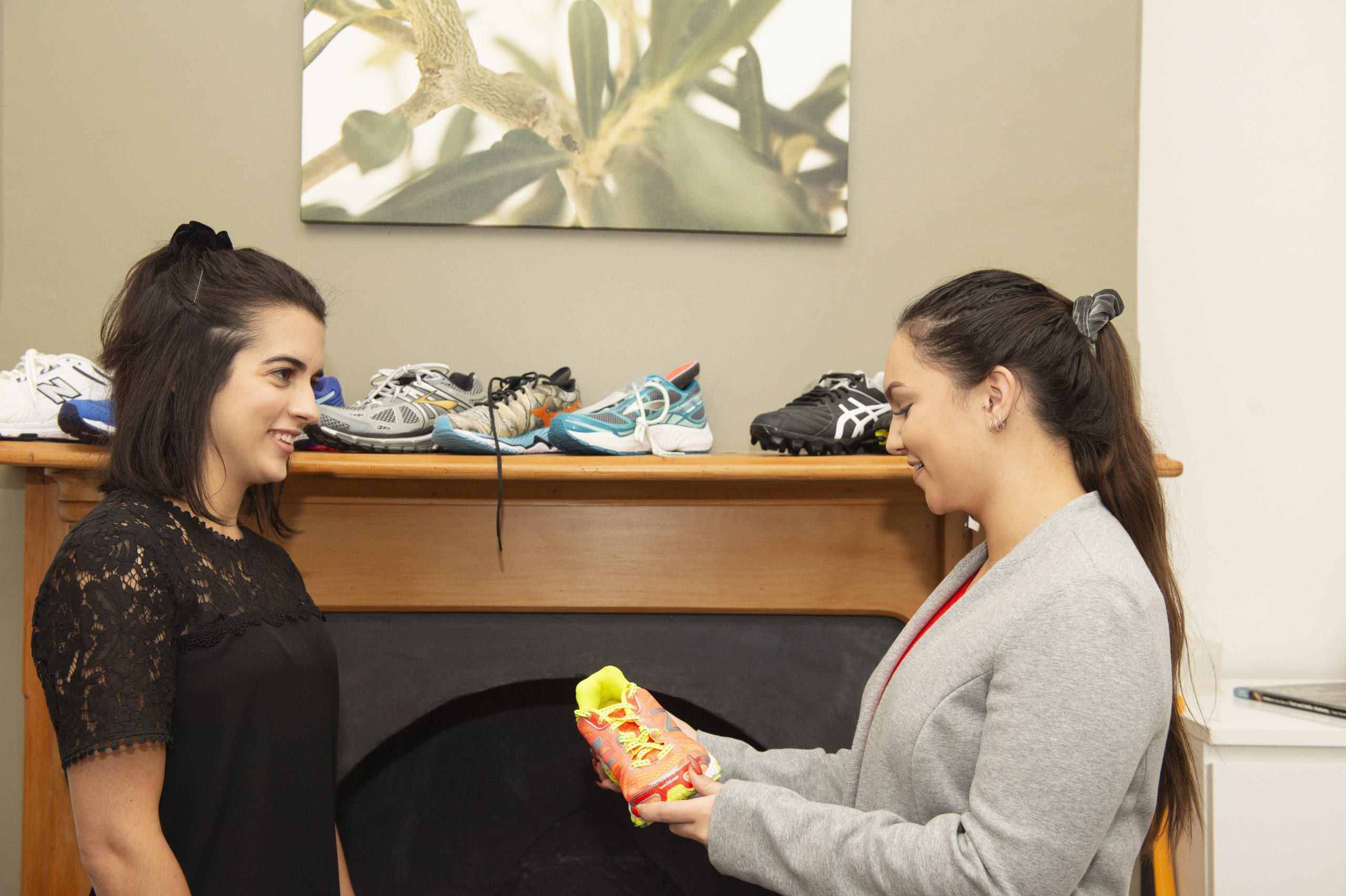There’s a lot of information out there about ingrown toenails, and unfortunately, some of it is not accurate. Which, when you’re struggling with an ingrown nail and the methods you’re reading online aren’t working, can be very frustrating, disheartening, and painful.
Here we have debunked some of the top ingrown nail myths that we hear regularly – many of whom have tried treating their ingrown toenail on their own for weeks first, without success.
1. It’s Not An Ingrown Nail Unless It’s On The Big Toe
This one stems from many people being unsure of the cause of their toe and toenail pain on their smaller toes, despite having similar signs and symptoms to previous ingrown nails they’ve had on their big toe. The truth is:
- Yes, you can develop ingrown toenails on the lesser toes,
- The side of the toe is likely to appear red and swollen, and pushing on the area will elicit pain
- Some of the time, there’s notable debris built up in the side of the nail (including discharge from the nail piercing the skin) that when removed, can instantly feel significantly better
2. Cutting a ‘V’ In The Centre Of Your Nail will Fix An Ingrown Toenail
While it is true that other cells in the body work by ‘coming together’ during repair and therefore could hypothetically ‘pull away’ from the sides of the ingrown toenail, unfortunately that’s not how the nail cells work or grow. Your nail grows in only one direction – out. What you do to the ends of your toenails doesn’t change this – nor does it change the painful nail spicule that is embedded into your skin when you have an ingrown nail.
We recommend saving yourself the hassle – and the potential of shredding through socks and hosiery with your sharp nail edges after a ‘V’ cut out.
3. Ingrown Toenails Are Only For School-Aged Children & Above
It makes sense that this sounds viable, after all, school comes with strict shoe requirements that kids must stay in all day everyday, and footwear is a primary cause of ingrown toenails. While it’s true that we see a lot of ingrown nails in school-aged children, we also see them in babies and toddlers too! If your young child has a red and swollen toe, or it looks like they have an ingrown toenail, bring them in for an appointment.
4. An Ingrown Toenail Will Get Better On Its Own
Think of an ingrown toenail like a sharp, big splinter – but instead of disappearing into the skin, being attached to your nail means that it continues to pierce through, growing as your nail grows, and leaving a painful, open wound where it has pierced the skin (which is vulnerable to infection). This is not something that goes away or just gets better on its own – not without removing the painful nail spicule first.
There are definitely things you can do to help relieve your painful symptoms – soaking the nail, taking painkillers, taking antibiotics, but none of these actions remove the nail from the skin.
5. Antibiotics Will Fix An Ingrown Nail
Antibiotics are a helpful medication for managing infections. If you have an infected ingrown toenail, it’ll hopefully kill the bacteria and give you relief. But what antibiotics don’t do is remove hard, sharp pieces of nail from the skin – which is the only way to truly fix an ingrown toenail.
Unfortunately, many people are simply given antibiotics from and told to wait it out and soak their toes, which while it can give them some much-needed relief from their painful symptoms, that relief is only temporary as the nail is still lodged in the skin. Having the ingrown nail removed will give you symptom relief and prevent it from continuing to bother you.
6. Ingrown Nail Surgeries Leave Ugly Looking Nails
It makes sense to think that when part of your nail is removed as part of a surgical procedure to permanently fix the ingrown nail, that your nail will be left looking less than ideal. The main difference is that your nail will appear to have a straight nail edge, instead of one that curves down the side and it will be slightly narrower (unless the nail is significantly deformed prior to the procedure).
Our Clinicians will advise you on options available to you and if you need a permanent solution will refer you to Podiatric Foot and Ankle Surgeon Mr Paul Armanasco who has performed the procedure many thousands of times under local or general anaesthetic.
Got Any More Ingrown Nail Questions?
Southwest Foot and Ankle Centre is fully to provide podiatry services for ingrown toenails at both our WA Bunbury and Vasse rooms!
Contact Southwest Foot and Ankle Centre today on (08) 9791 1319 or by booking an appointment online!








